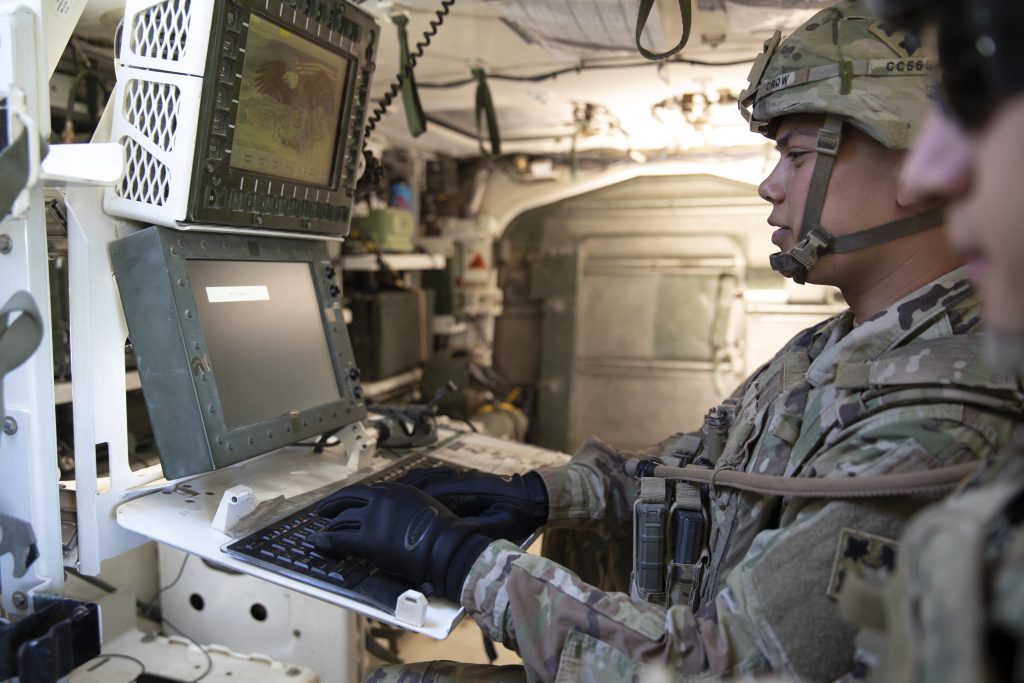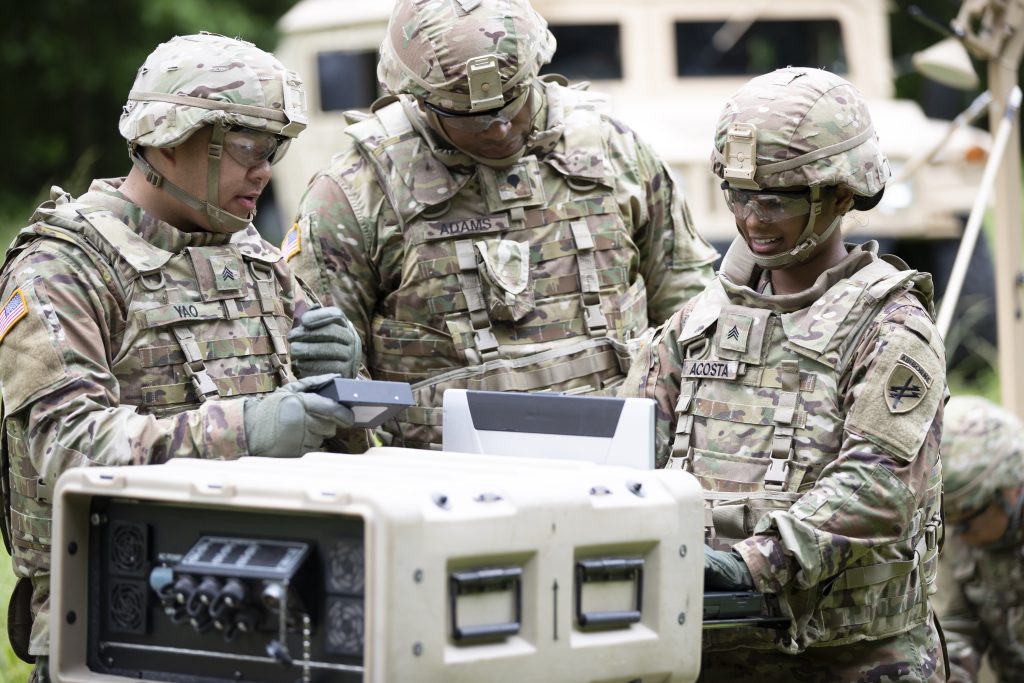
The Army is optimizing the interoperability of the enterprise through data architecture and standards.
by Gregory Smoots, Ph.D.
To ensure the safety of Soldiers on the ground, it is imperative that the U.S. Army increases and improves system interoperability across the enterprise. New combined efforts, initiated by the Army’s Office of the Chief Information Officer (OCIO) Architecture’s Data and Standards Directorate, leverage the Interface Interoperability Insights Platform (I3P) to improve interoperability across Army systems and integrate joint capabilities within DOD and our partners.
The new platform ingests data from multiple platforms and combines previously siloed architecture data of the Army. The I3P delivers insights into system interfaces and interoperability that influence technical architecture design through testing and certification support, DOD, joint and coalition standards adoption, and procurement options. In turn, it enables faster decisions on the battlefield and closes the gap between DOD and mission-partner standards.

Gregory Smoots, Ph.D.
|
INTEROPERABILITY DEFINED Army Regulation 34-1, Multinational Force Interoperability, defines interoperability as the ability to routinely act together coherently, effectively and efficiently to achieve tactical, operational and strategic objectives. Interoperability activities are defined as any initiative, forum, agreement or operation that improves the Army’s ability to operate effectively and efficiently as a component of the joint force and as a member or leader of an alliance or coalition across the range of military operations. |
BETTER TOGETHER
I3P provides several capabilities that benefit the future of the warfighter and improve the systems and technologies used in the field. This new software assists the Army interoperability certification process by increasing efficiency and furthering insights into future improvements. It pulls data from universal mission threads and advances systems with emerging standards to help Soldiers perform analytics that enable interoperability for our warfighters. I3P uses Federated Mission Networking (FMN) spiral ingest, gap analysis and common operating environment compliance to understand the scale of the task (the now) and manage impacts and benefits (the future). NATO’s Allied Command Transformation defines FMN as “a capability aiming to support command and control and decision-making in future operations through improved information-sharing.” It also pulls data from different sources and capabilities to a centralized platform to help systems integration and resolves interoperability challenges.
I3P does all this by reducing the number of duplicative and outdated systems within the investment portfolio that lack the tools and solutions to enable decision superiority. This integral software will further the Army’s understanding and assist in future (technical) procurement, for example, in the Joint Systems Integration Library and recently at Project Convergence 2022, and beyond. I3P will assist the Army in visualizing technical interoperability and architecture challenges.

DATA CAPABILITY: The Interface Interoperability Insights (I3P) platform provides several capabilities to the warfighter to help Soldiers perform analytics and enable interoperability. (Photo courtesy of OCIO)
MAKE IT LEAN
With spending always being an issue, the reduction of outdated and duplicative systems will help information technology (IT) spending and control processes to achieve a cost savings through the divestment of its legacy portfolio. This cost savings will posture the Army to acquire advanced technologies and allocate funds for current and future investments in data and the cloud as the Army develops and delivers solutions for multidomain operations.
With multidomain operations being the future of warfighting, I3P provides several capabilities that help Army senior leaders address knowledge gaps. I3P does this by enabling leaders to analyze information concerning standards, data and architectures to enhance decisions on the battlefield. The implementation of this initiative across the enterprise will improve data compatibility, interoperability and communications within DOD and with our joint partners.
Future systems and Soldiers will benefit from I3P. Integration of I3P, in developing warfighting systems, will benefit Soldiers on the ground by enabling early and real-time approval of systems. This is huge, in that, system authorization has historically been a very long bureaucratic process. In its current state, I3P gives the Army the capability to develop technical architectures in an innovative way to increase systems interoperability based on approved joint and DOD standards. This capability will enhance the Soldier’s information and decision-making superiority in the field.

ONE MISSION: New efforts initiated within the Architecture, Data and Standards Directorate in the Office of the Chief Information Officer improve interoperability across Army systems and integrate joint capabilities with DOD and our partners. (Photo courtesy of OCIO)
I3P will successfully close the gap between DOD and mission-partner standards by creating system interoperability. I3P will provide insights into the systems that are being created and developed and allow for early implementation into the mission. Using a tank as an example, I3P will help units integrate communications systems during the development phase, connecting the tank to existing systems, ground systems, and DOD and mission-partner systems. This level of integration is a game changer. Now, with I3P, known and approved systems can be considered during system creation to allow for a cohesive flow throughout the acquisition process. The gap between DOD and partners, mission requirements and system requirements, interoperability technical assessments is being closed through the employment of I3P.
The OCIO works to enact the improvements provided by I3P to support the overall mission of the Army. This initiative will create a more cohesive flow of data throughout the enterprise and between the DOD and our partners. Our Soldiers on the ground will benefit from their leader’s ability to make decisions in real-time during the early development stage and having systems connected allowing for earlier use in the field. I3P will accelerate the Army’s digital transformation and help the Army reach its technological goals.
For more information, go to https://www.army.mil/cio.
GREGORY SMOOTS, PH.D., serves as the deputy director chief, standards and compliance in the Architecture, Data, and Standards (ADS) Directorate in the Office of the U.S. Army Chief Information Officer. He received his Ph.D. in engineering and M.S. in engineering and industrial management from The George Washington University. Before joining the ADS, he served with the 480th Intelligence Support Command, United States Air Force; Information Forces Command, United States Navy; and the Digital Warfare Office, Naval Operations (N2N6) Command, United States Navy.







